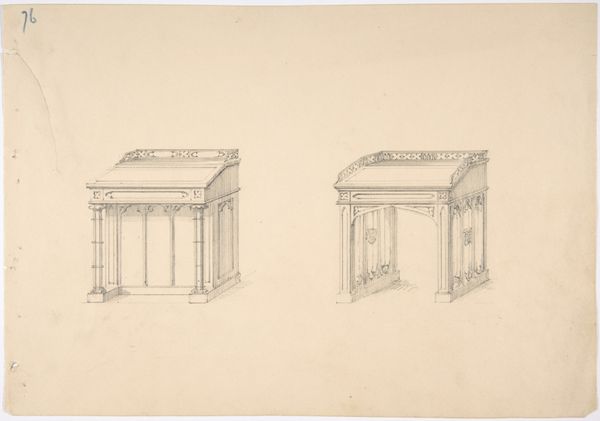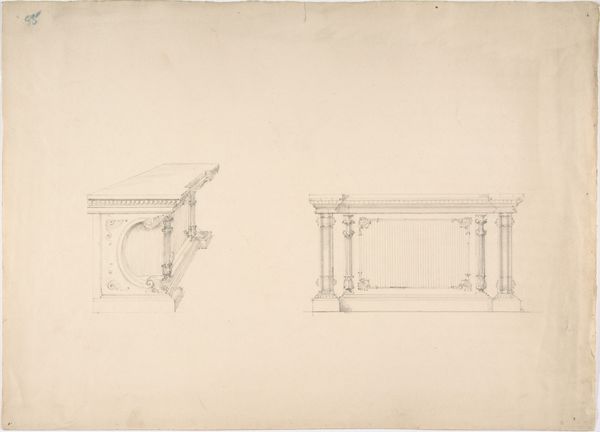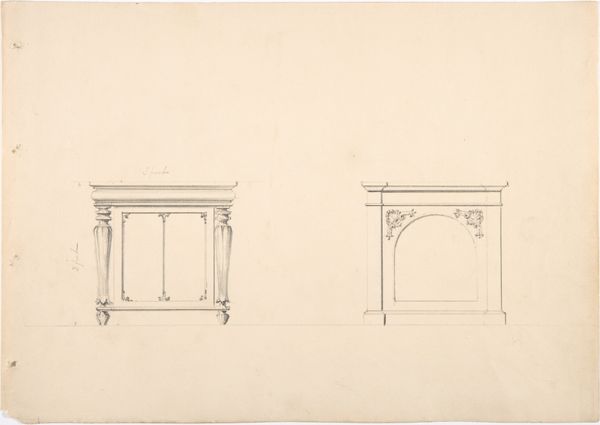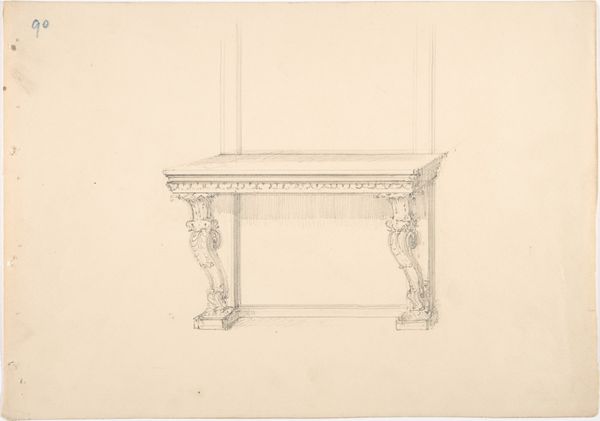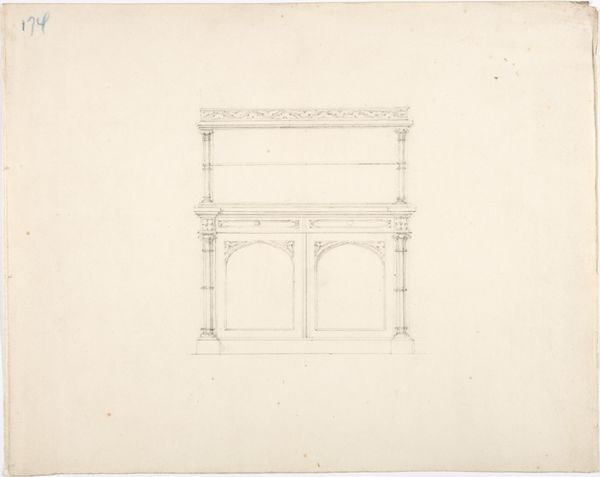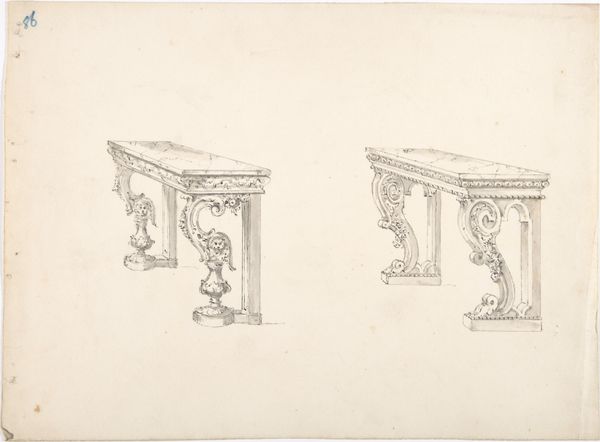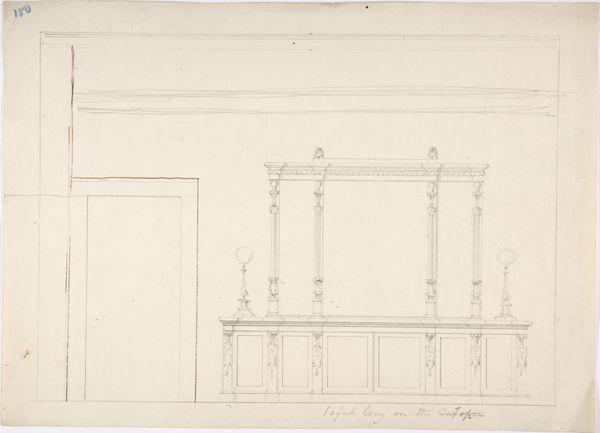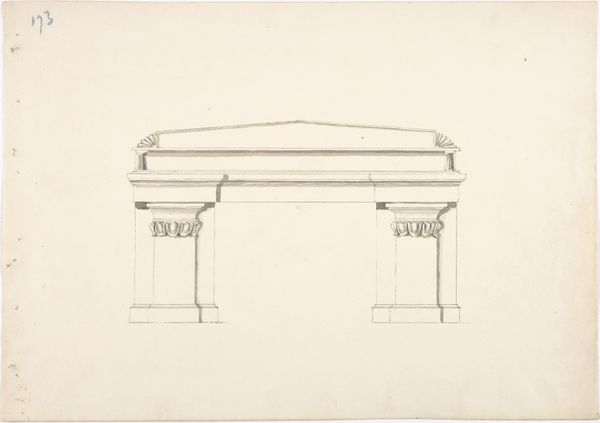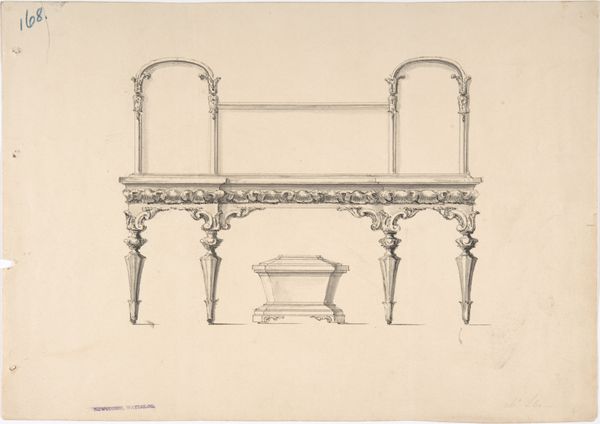
drawing, print, paper, pencil, graphite
#
drawing
#
neoclacissism
# print
#
etching
#
paper
#
form
#
geometric
#
pencil
#
line
#
graphite
#
academic-art
Dimensions: sheet: 8 11/16 x 12 5/16 in. (22 x 31.2 cm)
Copyright: Public Domain
Curator: This detailed rendering offers us insight into furniture design during the period of 1800 to 1850. Known as "Design for a Gothic Desk and Two Low Chairs", this drawing utilizes graphite, etching, and pencil on paper. While the artist remains anonymous, this piece is held at the Metropolitan Museum of Art. What stands out to you initially? Editor: The desk looms large. It really dominates the space. And yet the chairs are delicate and surprisingly upright. It's austere but strangely inviting all at once. I want to know who designed this. Curator: Knowing its gothic inspiration, we can see an imagined power structure emerge when considering how spaces were conceptualized during that period. These structures—religious and domestic—largely ignored or disenfranchised entire groups of people. So the austerity may reflect this intentional hierarchy. Editor: Exactly. And how would these forms influence the user’s physical and intellectual relationship with writing, studying, or working? Who was invited to sit in those chairs, at that desk? Were women involved at any level, from conceptualization to execution? Was the very pose forced by these chairs implicitly masculine? It is tempting to see this sort of formality as another aspect of power. Curator: Absolutely, the clean lines and geometric forms characteristic of Neoclassicism further emphasize this sense of order and control. This type of furniture undoubtedly impacted how people physically and socially interacted with texts and ideas, perhaps encouraging a sense of rigid, authoritative learning. But what of the act of rebellion? Did these forms help those seeking power through more conventional channels? Editor: An interesting point. The fact that the designer remains unknown to us can serve as a crucial element for analysis. Their story is equally valuable in that the objects represented here may have served different purposes throughout varied intersectional perspectives. I find that element incredibly compelling. Curator: As we look at the fine line work on the page, what seems at first to be a sterile image opens up all kinds of questions. This Gothic desk and set of chairs gives us much to contemplate. Editor: I agree, there are stories lurking between the lines. And this artwork inspires the quest to unveil them.
Comments
No comments
Be the first to comment and join the conversation on the ultimate creative platform.
